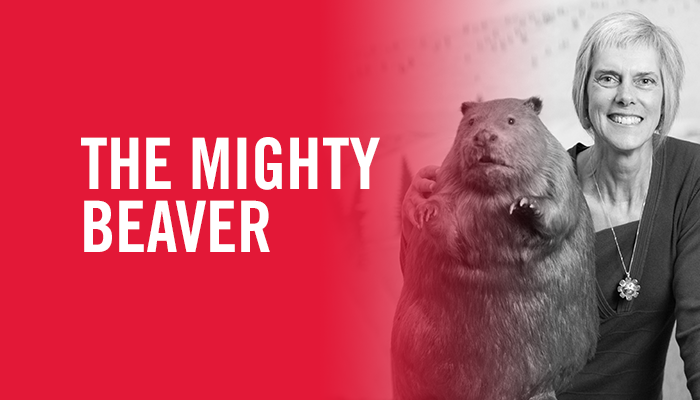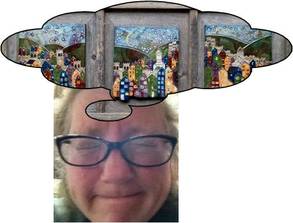Yesterday was a VERY good day. We had three thrilling pieces of very good news, consisting of 1) for the very first time we get a US Forest Service exhibit at the festival which we never did before, 2) that the Alhambra Valley Band is confirmed in some variation, and 3) that Brock Dolman is going to appear in beaver costume to talk about beaver benefits on stage. I am so happy when things fall into place that I start looking immediately on the horizon for the dark cloud (or piano) that will inevitably follow.
But things are going in the right direction. I’m definitely happy for that.
Meanwhile, in the world of false beaver accusations, cranky old men are still saying crazy things about beavers, just in case you were curious.
Critter built impoundment beneath railroad bridge spurs Tom McDonald to action.
Over time, he sold most of the 11 acres. Other developers created the Portland Fairview RV Park, and a cozy cluster of single-family homes sprung up around Palisade Drive, Heartwood Circle and other residential streets. McDonald owns just a sliver of land between the RV park and Northeast 217th Court. Fairview Creek runs right through the tract, and Union Pacific’s railroad trestle is just a stone’s throw away.
That’s where the problems began, and McDonald had what he described as a “Holy cripes!” moment.
“We were out talking (and) walking around, and beavers were popping up around our feet,” McDonald relates. “They put a delay on our deal because it was so wet.”
During the prep period before any sale was possible, Mc Donald discovered that his land had experienced some heavy flooding. The culprit appeared to be an industrious beaver clan that had built a 6-foot-tall dam across Fairview Creek under the railroad bridge. While the Multnomah County Drainage District No. 1 could technically lower the waterline at Fairview Lake, this wouldn’t remove the dam or solve the long-term problem with flooding.
Donald discovered that his land had experienced some heavy flooding. The culprit appeared to be an industrious beaver clan that had built a 6-foot-tall dam across Fairview Creek under the railroad bridge. While the Multnomah County Drainage District No. 1 could technically lower the waterline at Fairview Lake, this wouldn’t remove the dam or solve the long-term problem with flooding.
During the prep period before any sale was possible, McDonald discovered that his land had experienced some heavy flooding. The culprit appeared to be an industrious beaver clan that had built a 6-foot-tall dam across Fairview Creek under the railroad bridge. While the Multnomah County Drainage District No. 1 could technically lower the waterline at Fairview Lake, this wouldn’t remove the dam or solve the long-term problem with flooding.
“Looking at the situation from a layman’s view, it appears that area is ‘honeycombed’ with beaver burrowing,” McDonald said.
![annex-keaton-buster-general-the_06[1]](https://www.martinezbeavers.org/wordpress/wp-content/uploads/2017/06/annex-keaton-buster-general-the_061-300x241.jpg) Because you know how beavers like to burrow in wetlands. Dig Dig Dig, that’s what beavers do. And destroy train trestles, like in those silent movies.
Because you know how beavers like to burrow in wetlands. Dig Dig Dig, that’s what beavers do. And destroy train trestles, like in those silent movies.
Honestly, is the crazyoldmanvan coming for you soon? I mean what would be the POINT of a beaver digging in flooded banks? They obviously aren’t making a lodge inside them. Now I suppose they theoretically could be making a canal to drag supplies through, but do you honestly think the metal and cement pilings and steel girders of the modern train trestle are going to be troubled by a bunch of beavers?
I’m a little doubtful about the 6 foot dam myself. I mean our dam was assessed by PWA once as 7 feet tall but that was because they were lying and measuring with sticks of terror. You can tell it’s not 7 feet tall because the man in the front filming is Moses Silva of sturdy Mayan frame and just over 5 feet. Assuming his mystery dam was as high as ours that means those beavers had a lot of resources to choose from.
Looking at this it’s kind of amazing to think that mom and Dad made this whole thing by themselves back then, because there were no yearlings to help.
Now I’m officially looking forward to our summer lineup. Here’s Brock as Buster Beaver at the Daily Acts breakfast in Sonoma in 2014.







 We have some wonderful new auction items to mention this fine sunday morning, and I’m thinking we should start with Jennifer Lovett’s smart book for teens and tweens “
We have some wonderful new auction items to mention this fine sunday morning, and I’m thinking we should start with Jennifer Lovett’s smart book for teens and tweens “ sure she was surprised to hear from me begging at her door but she generously agreed to send me one of the works she had recently fired. The complex technique demands carving the image on wet clay then glazing it into color. You really have to see it in person to understand how the colors, textures and rough barn wood all work together. It’s gorgeous. Doesn’t this need to be on your wall immediately?
sure she was surprised to hear from me begging at her door but she generously agreed to send me one of the works she had recently fired. The complex technique demands carving the image on wet clay then glazing it into color. You really have to see it in person to understand how the colors, textures and rough barn wood all work together. It’s gorgeous. Doesn’t this need to be on your wall immediately?
 A few months back I was contacted by
A few months back I was contacted by 




































